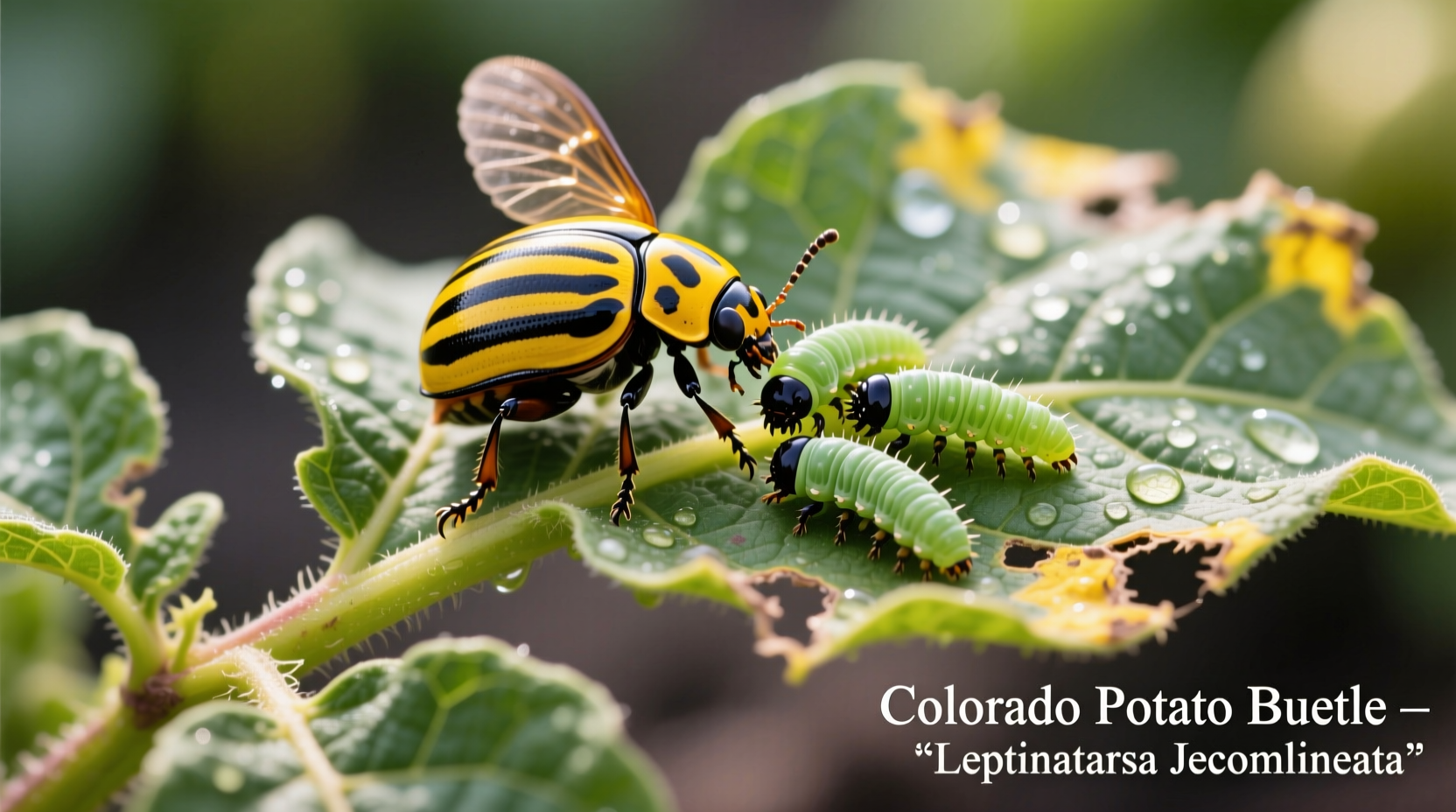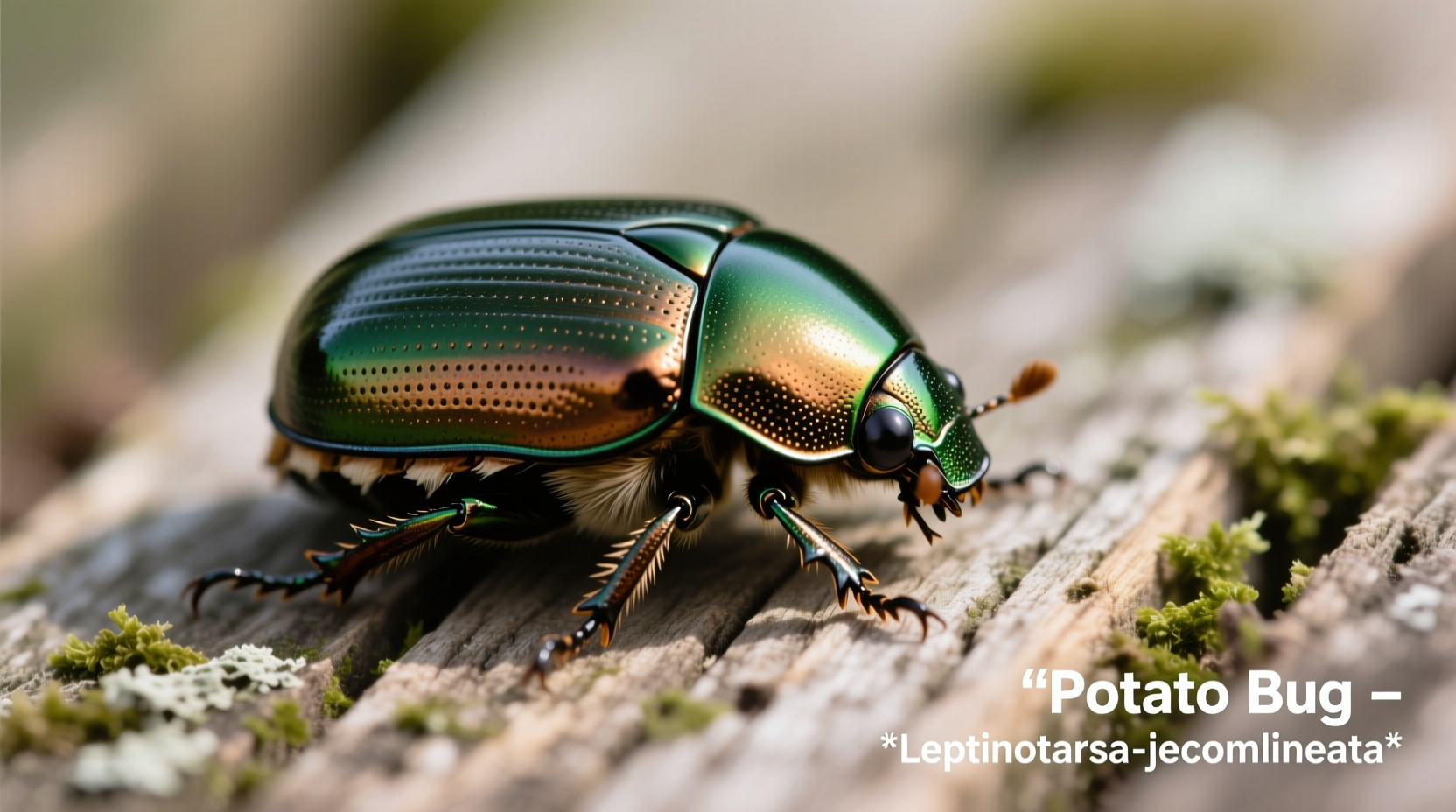If you're dealing with potato bugs, you're most likely encountering the Colorado potato beetle (Leptinotarsa decemlineata), a serious agricultural pest that can devastate potato crops. This guide provides science-backed identification methods, lifecycle information, and effective control strategies to protect your plants.
What Exactly Is a Potato Bug? Clearing Up Common Confusion
When gardeners and farmers mention "potato bugs," they're typically referring to the Colorado potato beetle, not the pill bug or Jerusalem cricket which are sometimes mistakenly called potato bugs in certain regions. The Colorado potato beetle is a highly destructive pest that targets potato plants specifically, though it will also feed on tomatoes, eggplants, and other nightshade family crops.
According to the USDA Agricultural Research Service, this beetle has been one of the most challenging agricultural pests in North America since the 1800s, capable of causing complete crop failure when left uncontrolled.
| Insect | Scientific Name | Actual Pest Status | Common Misidentification |
|---|---|---|---|
| Colorado potato beetle | Leptinotarsa decemlineata | Major agricultural pest | Rarely misidentified |
| Pill bug/Sow bug | Armadillidium vulgare | Generally harmless decomposer | Often called "potato bug" incorrectly |
| Jerusalem cricket | Stenopelmatus fuscus | Occasional garden visitor | Called "potato bug" in western US |
How to Identify Colorado Potato Beetles at Every Stage
Accurate identification is crucial for effective control. The Colorado potato beetle has four distinct life stages, each with unique characteristics:
Colorado Potato Beetle Lifecycle Timeline
- Eggs: Bright orange, oval-shaped clusters on undersides of leaves (laid in groups of 30-50)
- Larvae: Reddish with black spots, humpbacked appearance, grow through four instars
- Pupae: Orange to brown, found in soil 2-4 inches deep
- Adults: Yellow-orange with 10 black stripes, about 1/4 inch long

As noted by Penn State University Extension, adult beetles overwinter in the soil and emerge in spring when soil temperatures reach 50-55°F (10-13°C), coinciding with early potato plant growth.
Assessing the Damage: When Potato Bugs Become a Serious Threat
Colorado potato beetles cause damage at all life stages, but the larvae are particularly destructive. They feed on leaves, creating a skeletonized appearance as they consume the tissue between veins. Severe infestations can defoliate plants completely within days.
According to research from University of Minnesota Extension, a single beetle can consume about 40 square centimeters of foliage during its larval stage, and a population density of just 15-20 beetles per plant can cause significant yield reduction.
Effective Control Strategies: What Works and When to Use It
Successful potato bug management requires understanding the context and limitations of each control method. The effectiveness of control measures varies significantly based on the beetle's life stage, population density, and environmental conditions.
Organic and Cultural Control Methods
For home gardeners and organic farmers, several non-chemical approaches can be effective when implemented properly:
- Hand-picking: Most effective early in the season when populations are low. Drop beetles into soapy water.
- Row covers: Physical barrier that prevents adult beetles from reaching plants (must be installed before beetles emerge).
- Crop rotation: Rotate potatoes with non-host crops (like corn or beans) at least 200 yards away from previous year's location.
- Biological controls: Lady beetles, lacewings, and the parasitic wasp Edovum puttleri can help control populations.
When Chemical Controls Are Necessary
For severe infestations, targeted insecticide use may be required. However, Colorado potato beetles have developed resistance to numerous chemicals over time. The USDA Agricultural Research Service reports that resistance has been documented to more than 50 different insecticides.
Consider these context boundaries when using chemical controls:
- Apply insecticides when larvae are in the first or second instar stage (most vulnerable)
- Rotate between different insecticide classes to prevent resistance development
- Avoid broad-spectrum insecticides that harm beneficial insects
- Always follow label instructions for application rates and timing
Preventing Future Infestations: Long-Term Management Strategies
Prevention is always more effective than reactive control. Implement these strategies to reduce future potato bug problems:
- Early planting: Plant potatoes early so they're more established when beetles emerge
- Trap cropping: Plant a small, early crop of potatoes to attract beetles away from your main crop
- Soil management: Till soil in fall and spring to expose overwintering adults to predators and weather
- Monitoring: Check plants twice weekly during growing season for early signs of infestation
Research from Cornell University Cooperative Extension shows that integrated pest management approaches combining multiple control methods reduce Colorado potato beetle populations by 70-90% compared to single-method approaches.
Common Misconceptions About Potato Bugs
Several myths persist about potato bugs that can lead to ineffective control measures:
- Myth: All "potato bugs" are the same insect
Fact: The term refers to different insects in different regions, but only the Colorado potato beetle is a serious potato pest - Myth: Potato bugs bite humans
Fact: Colorado potato beetles do not bite or sting humans - Myth: One application of insecticide solves the problem
Fact: Multiple applications at proper intervals are usually needed due to the beetle's lifecycle











 浙公网安备
33010002000092号
浙公网安备
33010002000092号 浙B2-20120091-4
浙B2-20120091-4